Raptors are birds of prey that hunt and feed on vertebrates. The term encompasses a group of birds consisting of hawks, owls, eagles, kites, falcons, and vultures. Because of their acute eyesight, strong beaks, and powerful feet with hooked talons, raptors are effective hunters. These birds are protected under the Fish and Game code and California Code of Regulations because of their value to the state. Let's look at hawks and raptors: California is home to a variety of these birds and it is fascinating to watch them soaring through our sky.
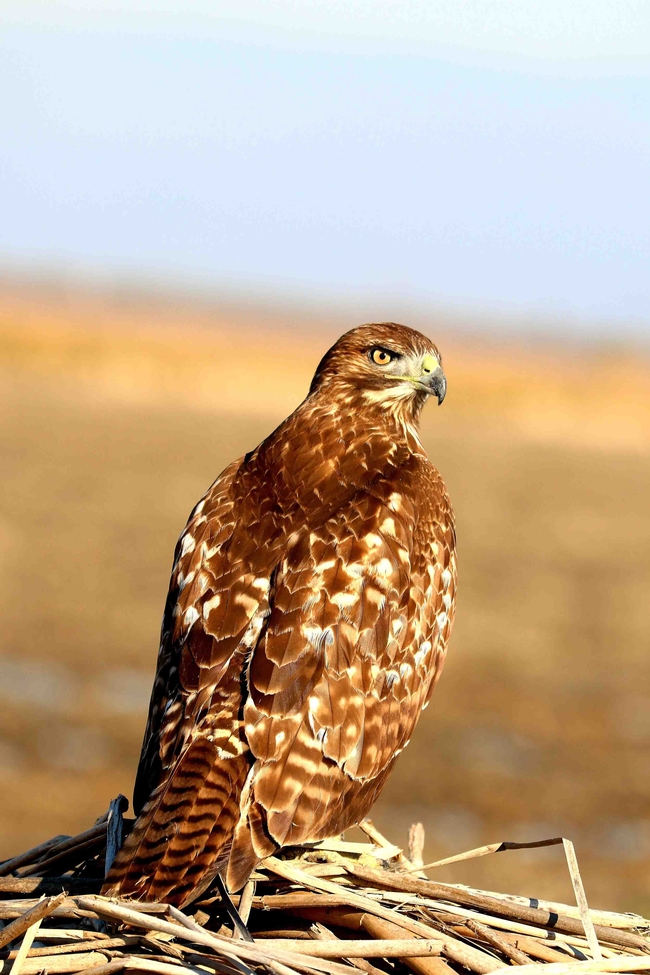
Red-shouldered hawks are often heard before they are seen. Their distinctive “kee-ah” call is a clue that one is near. In California, the Red-shouldered hawk may be visible in more open habitats like riverside forests and oak woodlands. They are also found in urban and residential areas, parks, and cemeteries, nesting in non-native trees, particularly eucalyptus. Red-shouldered hawks dine on small mammals, amphibians, reptiles, and other birds. Their keen vision and sense of hearing make them formidable predators able to kill animals their own size. Red-shouldered hawks have rusty, copper-colored heads and a distinctive white crescent on the tip of each wing.
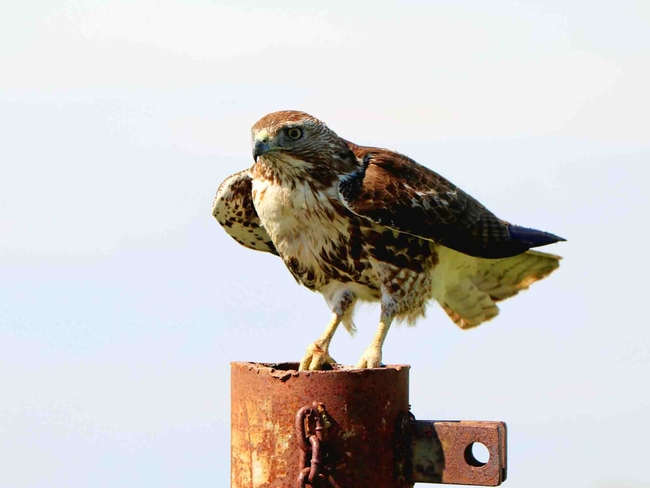
Often confused with the Cooper's hawk is the Northern Goshawk, which has nearly identical coloration. These hawks can be seen during the winter months stalking backyard bird feeders and chasing unsuspecting songbirds.
The largest of the hawks seen in California is the Ferruginous hawk. With a wingspan between 52 and 56 inches, this raptor soars high in the air with its wings held in a distinctive raised V-shape. The Ferruginous hawk can be spotted during the winter over grasslands and plains throughout the state. Their light-colored undersides and the rusty plumage on their wings and back have given them their name: “ferruginous” is defined as containing iron oxides or rust. Unfortunately, the population of these enormous raptors has declined, and their status in California is threatened.
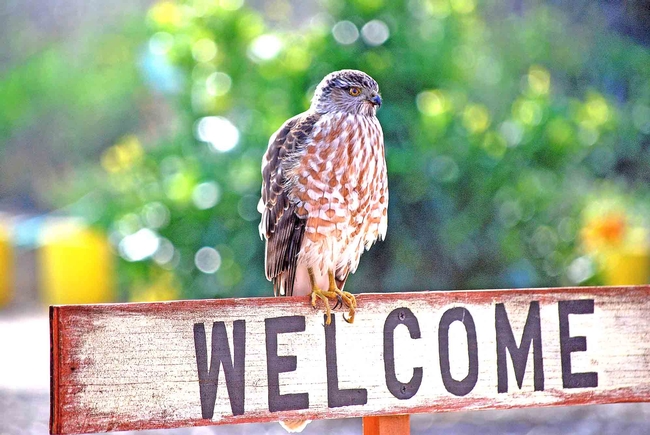
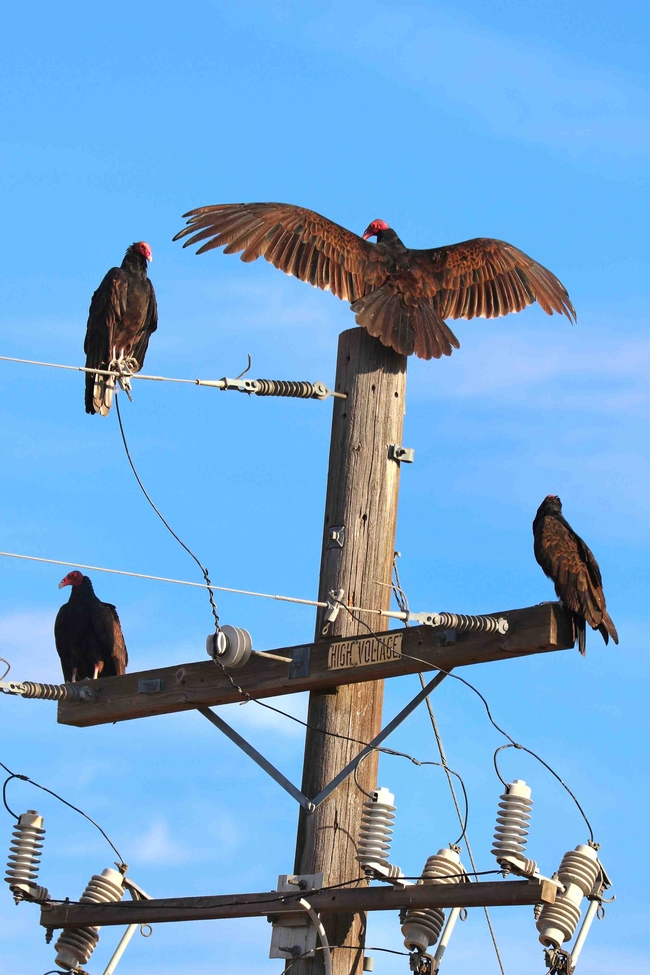
Wherever you are in California, you're apt to see vultures. The three species in our state are the Turkey vulture, Black vulture, and the California condor. They are carnivorous and perform an important health service by eating the carrion (decaying flesh) of dead animals found lying in fields and at the sides of the roads. By eating the dead animals that other predators can't stomach, vultures help deter the spread of both tuberculosis and rabies. Their powerful stomach acids and strong immune systems allow these birds to be exposed to disease with no detrimental effect. In addition to tuberculosis and rabies, diseases such as distemper, anthrax, salmonella, and botulism are no problem for these raptors.
The Turkey vulture (Cathartes aura), also called the Turkey buzzard, is the most common vulture found in California. So named because of their resemblance to wild turkeys, these raptors are easy to identify – they have skull-like bald red heads, pink beaks, white bills, and brown-black bodies. Turkey vultures hiss when they are agitated or fighting over carrion. They are often seen soaring over open fields looking for food or at the side of a road, eating the meat of an animal killed by a car. Turkey vultures can become so loaded down with their meal that when threatened they will sometimes projectile vomit their food in order to fly away quickly. They have also been seen to projectile vomit up to ten feet in self-defense. Turkey vultures will defecate on their feet to cool off during hot weather. This defecation may also provide an antiseptic wash, as the vultures' digestive juices kill bacteria. In the fall they are sometimes seen in large flocks of nearly 100 birds migrating south on thermals (upward currents of warm air). Turkey vultures can live up to twenty years in the wild.
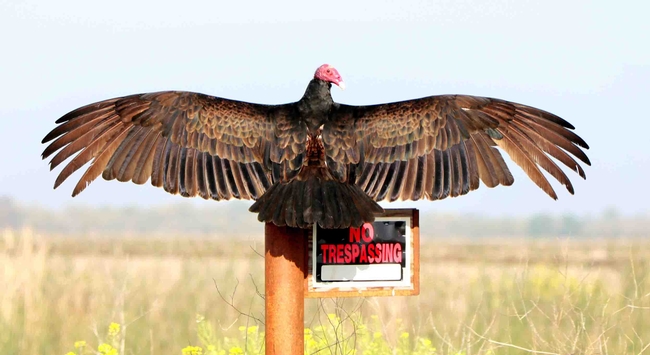
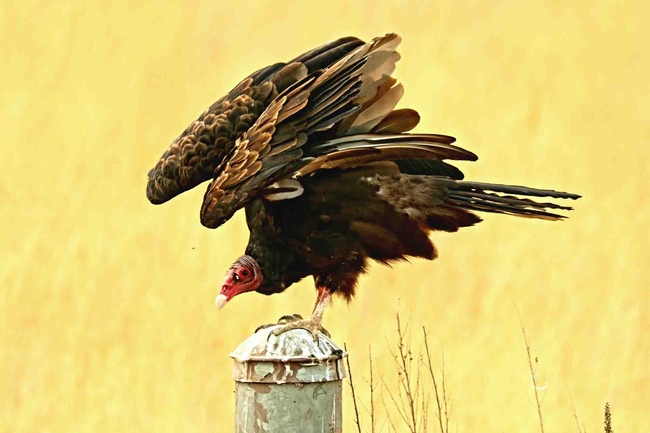
The health of our planet depends on the health of our bird populations, and especially the vultures that clean up dead animal carcasses as they feed. California skies are brimming with a variety of raptors to observe and study. All you need to do is look up.
Vegetable Plant Sale! Stock up on popular varieties of vegetable plants at our Plant Sale on Saturday, April 2, 2022 from 9 to 11 am. The sale will take place at the Master Gardener Demonstration Garden at Patrick Ranch (10381 Midway, Durham) rain or shine. For more details, including a plant list, check our Vegetable Plant Sale webpage.
UC Master Gardeners of Butte County are part of the University of California Cooperative Extension (UCCE) system. To learn more about us and our upcoming events, and for help with gardening in our area, visit our website. If you have a gardening question or problem, email the Hotline at mgbutte@ucanr.edu (preferred) or call (530) 538-7201.